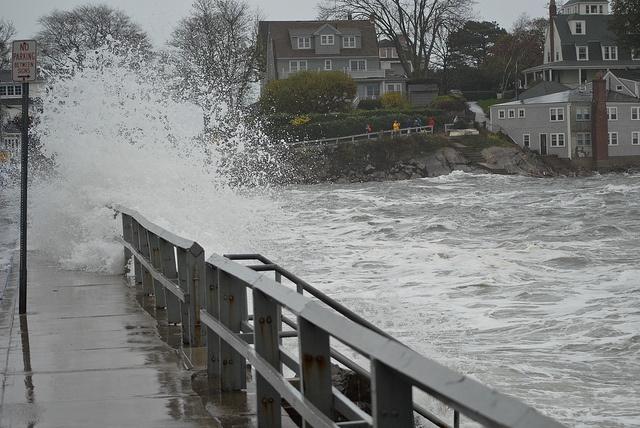
An unseasonably hot day that scientists attribute to climate change can be either a drag or a benefit depending upon where you live and the time of year. The same goes for an extraordinary dump of snow that creates snow days out of work schedules and keeps kids at home when you're not prepared. But climate change has delivered other headaches over the past year that ultimately translate to extra costs for households and will likely impact our wallets in future years, as well.
Food and services
The most talked about cost of climate change is often food and services. The Environmental Protection Agency acknowledged in October that "climate change could make it more difficult to grow crops, raise animals, and catch fish in the same ways and same places as we've done in the past." To the consumer, that can mean higher costs for food and scarcity of products that we have come to depend on because of unpredictable weather or increased costs for agricultural irrigation (the almond industry has been battling this issue in California for years).And of course, if it's more expensive for the consumer to buy those almonds, ground coffee, chicken or beef products, we'll notice it when we pay the restaurant bill or buy a cup of joe at the local convenience store as well. According to the Climate Institute, climate change is a real threat to that morning cuppa. The good news, is the coffee industry is already looking at new technology and mitigation methods to combat some of those stifling effects of climate change.
The domino effect: Tourism and the services we depend upon
Twentieth century history is filled with stories of towns that managed to remake themselves on the strength of an innovative tourist trade. Small pioneer and agricultural towns up and down the West Coast have discovered in recent decades that they could reboost their economies by promoting tourism. Old railway and farming towns like Leavenworth, WA (now a alpine vacation getaway) and Astoria, OR (an old fishing town that relies on tourism to boost its revenue) have in recent years thrived by finding ways to bring tourism into their towns. In so doing, they've proven that tourism isn't just a secondary industry, but a very valuable means for cities to pay their operating expenses, provide jobs, build schools and ensure resiliency.For some cities that industry is already facing threat from global warming in the form of rising tides and potential droughts. Areas around Astoria have already begun looking at mitigation to save the beaches that draw in travelers during the summer months. Island Press points out that about two-thirds of the forests in the Northwest serve as destinations for tourists year-round and can be at risk from global warming, flooding and other environmental problems. As small Northwest lumber towns learned early on in their development, what happens in the forest often impacts the cost of living and jobs in the towns that rely upon them.
Energy costs
The EPA points out that changing environmental conditions will have a direct impact on our ability to generate energy and the options we have available in coming years. Energy production must be smarter not only in costs but in the resources it uses for cooling and generation. Our own costs at home are governed in part by that resource-savvy technology and how cities and states build and maintain their grids.But that challenge also means that there's increasing opportunities for innovation. In the UK and some parts of the U.S. and Canada, tidal energy is making use of the changing climate to improve energy production for nearby communities. In some areas, that innovation may mean more costs in taxes, but it also means more opportunities for better energy production for future generations.
Mitigation: Wresting control from climate change
If there is anything that Florida's flooded coastlines have driven home recently it's that smart environmental planning in coastal areas is vital not only to disaster mitigation but to the changes we can't see. While some experts suggest that parts of South Florida's coastlines will be lost to global warming, there are other states that are taking action now and consider it a smart investment to a sustainable community.Mitigation usually means higher taxes and cost of living for homeowners who ultimately bear part of the price tag of the upgrades. And those costs may mean a reduction or change in other services in their area that are sacrificed to cover the cost of mitigation.
More cost, but better quality of living?
Authors in the Journal of Climate and Ocean Economics offer a bright side: With mitigation and technological innovation comes better quality of life and safer living environments. Tourism has an opportunity to improve. Coastlines are better managed. The environmental costs that go along with our food production are better understood.Climate change will offer numerous challenges for communities over the coming decades. But it also offers the impetus to innovate and to work in hand with the environment for a more sustainable planet.
Flickr/Brian Birke
Jan Lee is a former news editor and award-winning editorial writer whose non-fiction and fiction have been published in the U.S., Canada, Mexico, the U.K. and Australia. Her articles and posts can be found on TriplePundit, JustMeans, and her blog, The Multicultural Jew, as well as other publications. She currently splits her residence between the city of Vancouver, British Columbia and the rural farmlands of Idaho.














